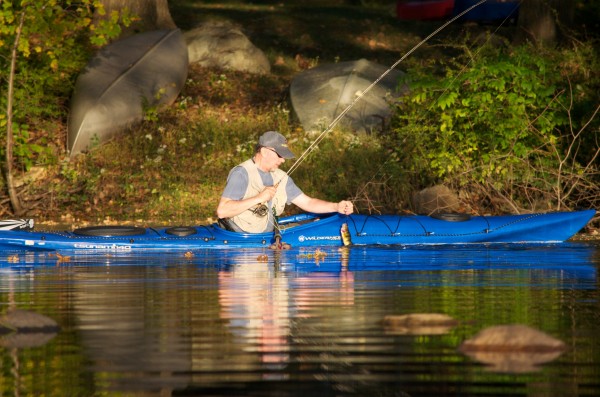 The first thing people say when they move to a lake is “It is so beautiful!” The second thing is often “Can we get rid of those weeds in the lake?”
The first thing people say when they move to a lake is “It is so beautiful!” The second thing is often “Can we get rid of those weeds in the lake?”
The short answer is: No – It is a lake, not a pool. You should expect life to thrive in a healthy ecosystem.
What happens when you get rid of all of the plants in a body of water? Some things start growing, primarily algae. Other things start dying, primarily fish and amphibians.
Why does this happen? The plants grow by creating energy from sunlight by a process called photosynthesis. One of the byproducts of photosynthesis is oxygen. When the plant is in the water, this oxygen tends to stay in the water. That is good for fish since they breathe the oxygen through their gills. It is generally bad for algae (especially blue-green algae).
So when things are in balance, plants grow in the lake and algae growth is slowed by the presence of the plants.
But sometimes things get out of balance — the plants get too thick and weeds grow and interfere with residents enjoying the swimming, boating, and fishing on the lake. What causes this? Nutrients (principally phosphorus and nitrogen) from the soil and surrounding houses. Sometimes it is fertilizer, sometimes it is a large storm that brings in grass clippings, leaf litter and soil. Sometimes it is a failing septic system. Lake Truesdale has a large watershed relative to its area so it gets water from a wide area.
So we treat the lake with herbicide in the spring to kill some (but not all) of the weeds. The weeds get knocked to the bottom of the lake and — if we overdid it on the herbicide — or if other factors combine, algae growth can multiply. Other factors include increased air and water temperatures leading to less dissoved oxygen – prime conditions for algae blooms. Less water circulation due to late summer mini-droughts can also be a factor (algae like still water). Usually it is a combination of factors.
So then we treat the lake with an algaecide to make the conditions less suitable for algae growth. By the time the algae cycle is over, it is usually the end of the summer and the algae blooms are mitigated by the cooler nights and shorter days (less sunlight – less photosynthesis). Fall comes then plants and algae go dormant for the winter. In the spring the cycle starts again.
This is a very simplified view of life in the lake which considered only plant life. We also have amphibians (frogs, salamanders, newts), reptiles (turtles, snakes), birds (geese, heron, ducks, eagles, hawks, loons, etc.), mammals (muskrat, otter, fox, coyote, mice, voles, etc.), insects (too many to list), and of course fish (bass, perch, pike, etc.). All of these can have an impact on the lake and the shoreline. And we can impact them. More on this in another article.
–
More information: 10 Things You Can Do To Love Your Lake • Lake Health • Geese Management • Lake Treatment information
